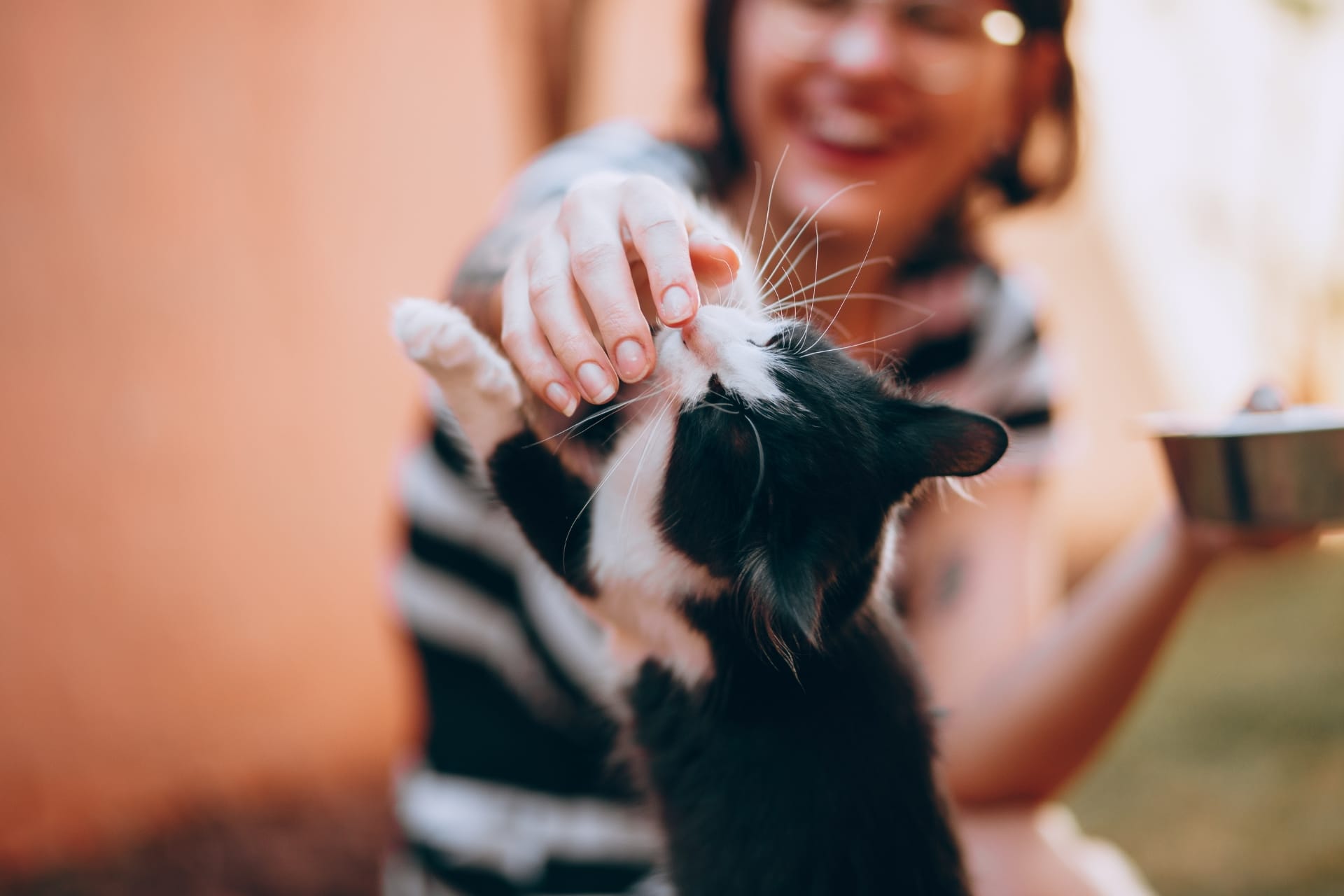TL;DR: Handle shy cats as a pet sitter by moving slowly, respecting their space, and using treats or toys to build trust. Maintain their routine, provide safe hiding spots, and use pheromone diffusers to ease anxiety for a stress-free visit.
As a pet sitter, stepping into a shy cat’s world is like being invited to a secret club – they’ll only let you in if you play by their rules. Shy cats can be a challenge, hiding under furniture or darting away at the sight of you. But with patience and the right approach, you can turn a nervous feline into a purring friend. This guide equips cat sitters with strategies to build trust and keep shy cats calm, ensuring a smooth experience for both you and your furry charge. Let’s dive into making those whisker-twitching moments a little less skittish 😸.
Understanding Shy Cats as a Cat Sitter
Shy cats often react to new people with caution, retreating to safe spots or freezing in place. This behavior stems from fear or unfamiliarity, especially when their owner is away. As a cat sitter, your goal is to make them feel secure without pushing their boundaries. Ask owners about the cat’s personality – do they hide often, or are they just slow to warm up? This insight, combined with the duties outlined in our cat sitter guide, helps you tailor your approach to each feline’s needs.
Reading a Shy Cat’s Body Language
Cats speak volumes through their posture and expressions. Recognizing these signals helps you gauge their comfort level:
- Flattened Ears: Ears pinned back signal fear or unease. Give the cat space if you see this.
- Tucked Tail: A tail curled under the body indicates nervousness. Avoid sudden movements.
- Hissing or Growling: These are clear warnings to back off. Respect their need for distance.
- Wide Eyes or Dilated Pupils: A sign of stress or alertness. Slow your actions and speak softly.
- Hiding: If they’re under the bed or in a corner, they’re seeking safety. Don’t force them out.
Observing these cues lets you adjust your behavior, ensuring you don’t overwhelm a shy cat. Check in regularly, as visit frequency, discussed in our cat sitter visit guide, can affect their comfort.
Building Trust with Slow, Calm Interactions
Winning over a shy cat is like earning a secret handshake – it takes time and finesse (same is true for aggressive cats). Start by moving slowly and speaking in a soft, soothing tone to avoid startling them. Avoid direct eye contact, which cats can perceive as a threat. Instead, sit on the floor at their level, letting them observe you from a distance. Offer a treat or a toy, like a feather wand, to create positive associations. If they approach, resist the urge to pet immediately; let them set the pace. These gentle interactions build trust, making them more likely to relax during your pet sitting visits.
Creating a Safe and Comfortable Environment
A shy cat needs a sanctuary to feel at ease. Ensure they have access to hiding spots, like a cozy cat bed, a cardboard box, or a quiet corner. Vertical spaces, such as shelves or a cat tree, give them a perch to observe safely. If the owner uses a pheromone diffuser like Feliway, keep it plugged in to reduce anxiety. Maintain their routine—feeding, litter box cleaning, and playtime—at the same times each day. A consistent schedule, paired with the regular visits recommended in our cat sitter visit guide, helps shy cats feel grounded.
Using Positive Reinforcement to Encourage Confidence
Rewards can coax a shy cat out of their shell. Offer high-value treats, like freeze-dried salmon, when they approach or show relaxed behavior, such as stretching or slow blinking. Engage them with toys, like a laser pointer or string, to spark curiosity without forcing interaction. If they respond positively, praise them softly to reinforce the connection. Avoid overwhelming them with too much attention; small, consistent rewards build confidence over time. This approach aligns with the gentle care techniques central to effective cat sitting.
Calming Techniques for Shy Cats
Sometimes, less is more when handling shy cats. Try these calming strategies during your pet sitting sessions:
- Ignore Strategically: Pretend the cat isn’t there while doing quiet tasks, like reading or tidying. This lets them observe you without pressure.
- Play Soft Sounds: Gentle music or a low-volume audiobook can create a soothing atmosphere, easing their nerves.
- Offer Familiar Items: If the owner left a blanket or toy, place it near you to link your presence with comfort.
- Be Predictable: Move in predictable patterns to avoid startling them. For example, always approach their food bowl the same way.
These techniques help shy cats associate you with safety, making each visit more comfortable.
Your inbox needs this
Subscribe to the Petme newsletter for weekly updates with pet care tips, tales, and member-only perks.

Tips for Long-Term Success as a Pet Sitter
Your role as a cat sitter goes beyond daily tasks—it’s about fostering trust that lasts. Document the cat’s progress, like if they start approaching you or eating in your presence, and share these updates with the owner via a platform like Petme. Suggest owners continue your calming techniques, such as using treats or maintaining hiding spots, to reinforce the cat’s comfort. If shyness persists, recommend a vet check for underlying anxiety. Your patience and consistency can help even the most timid cat become more confident over time.
Frequently Asked Questions About Handling Shy Cats
How can I calm a shy cat when cat sitting?
Calm a shy cat by moving slowly, speaking softly, and offering treats or toys to build trust. Use pheromone diffusers, maintain their routine, and provide hiding spots. Ignoring them initially while doing quiet tasks can also help them feel safe.
What is the 3-3-3 rule for cats?
The 3-3-3 rule suggests cats take three days to decompress, three weeks to adjust, and three months to fully settle in a new environment. For shy cats, respect this timeline by giving space and building trust gradually during pet sitting.
How do I handle a very shy cat as a pet sitter?
Handle a very shy cat with patience, avoiding direct eye contact or forced interaction. Offer treats, use a soothing tone, and provide safe spaces like a cat bed. Stick to their routine and use calming tools like Feliway to ease anxiety.
How do cats sit when they are scared?
Scared cats often crouch low, tuck their tail, and flatten their ears. They may hide or freeze, with wide eyes or dilated pupils. As a cat sitter, give them space and avoid sudden movements to help them feel secure.
Why won’t a shy cat come out during my visits?
A shy cat may stay hidden due to fear of unfamiliar people or disrupted routines. Encourage them with treats, maintain their schedule, and provide hiding spots. Over time, consistent, calm visits can build trust, encouraging them to emerge.











